2025 CalGreen Code Ends Affordable Housing
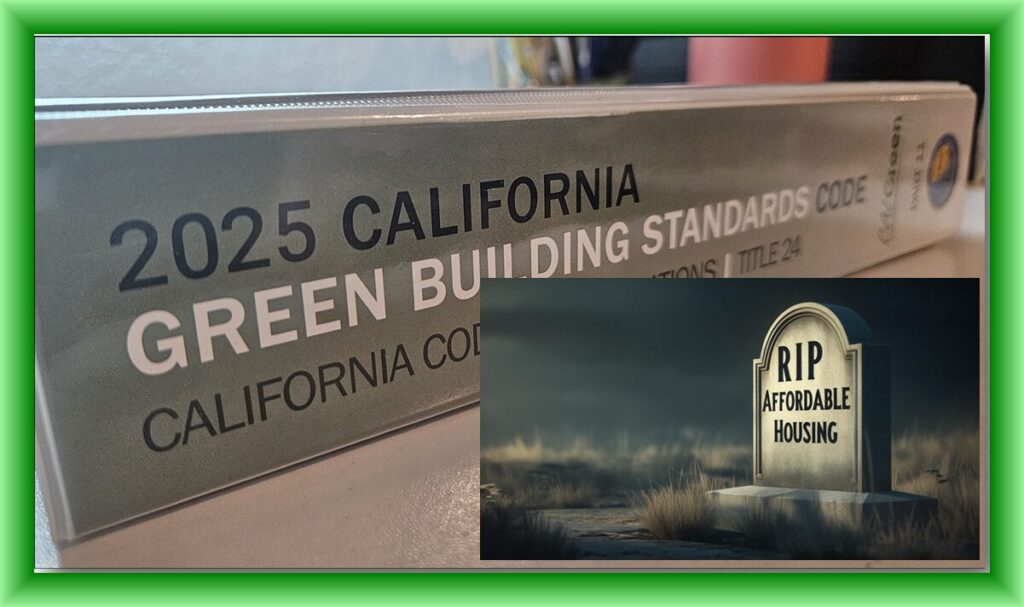
The 2025 California Green Building Standards Code goes into effect on January 1, 2026. This code will send shockwaves through the affordable housing industry.
The current 2022 Green Building Standards Code placed a significant burden on multifamily affordable housing projects. This was due to the requirement for a large number of electric vehicle charge stations.
In some cases, up to 40% of the parking spaces required a rough-in for future EV chargers and included additional requirements for installed electric vehicle charge stations.
In addition to the significant cost, this also added complexity to the project. In some cases, the electrical service to the site needed to be doubled to handle the required number of electric vehicle chargers. This increased the review time by utility companies, increased the utility service to the site, increased the transformer size, and increased the entire electrical distribution system within the facility.
As if the 2022 CalGreen Code was not stringent enough, the California Energy Commission has doubled down on the previous requirements. The new 2025 Green Building Standrds Code will create a paradigm shift in the affordable housing industry. And not in a good way.
Multifamily Dwellings Code Changes
EV Charging
The California Building Code defines multifamily buildings as Apartments, Condominiums, Townhouses, Triplexes and Fourplexes, and Mixed-Use Developments. These may all fall under the umbrella of affordable housing, depending on the design intent.
The 2025 California green building standards code requires that every parking space in a multifamily dwelling be provided with a low-power EV charging receptacle. You read that correctly, every parking space.
Incredulously, the new code also requires that the EV charge station associated with the individual units must also be connected to the dwelling unit’s electrical panel!
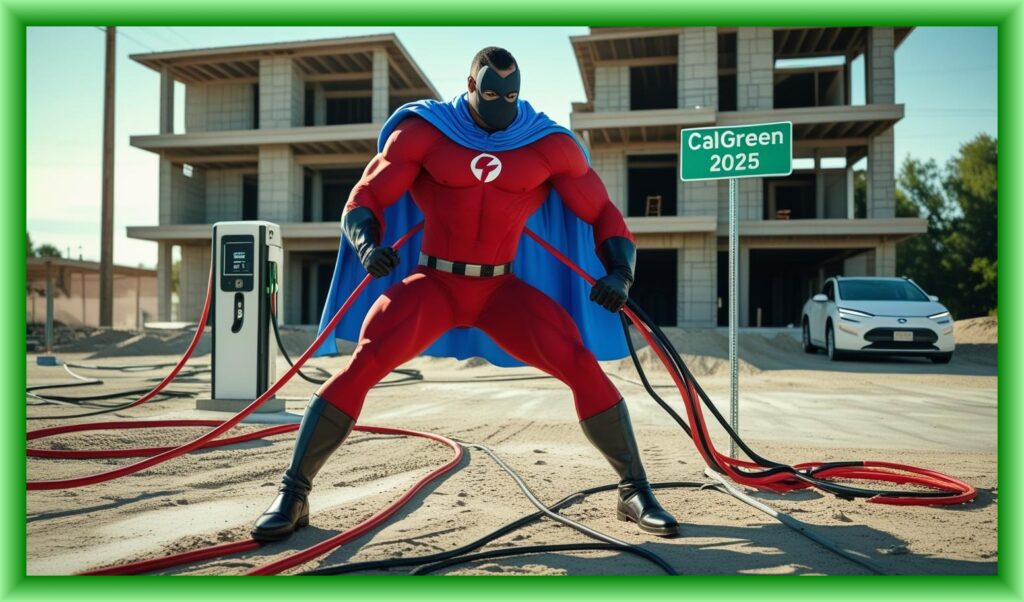
“Holy long conduit runs, Electric Man!”
This impacts not just the added cost of charging receptacles and long conduit runs from units to parking spaces, but also increases the size of the electrical service to each dwelling unit in the project.
In addition, fifty percent of the common-use, or unassigned, parking spaces must be equipped with Electric Vehicle Service Equipment (EVSE) chargers.
There is no exception for low-income housing, which will put additional strain on these challenging, but sorely needed, projects. The tremendous costs associated with this infrastructure will likely halt all new affordable housing construction in the State of California.
The truly ironic aspect is that most people in affordable housing do not drive expensive electric vehicles!
Bicycle Parking
Under the 2022 code, bicycle parking was a minor cost added to these projects. Under the 2025 CalGreen Code, the new requirements have moved the needle to “significant cost and complexity”. They will now require one secure and covered storage space for every two dwelling units.
The Details of the Code Changes
The following are the revisions from the 2022 California Green Building Standards Code (CalGreen Code) to the new 2025 California Green Building Standards Code. The new code goes into effect on January 1, 2026. The paragraphs have been copied verbatim from the code. The few “exceptions” in these code sections are not noted here as they have little impact on the majority of affordable housing projects.
4.106.4.2.2 Multifamily Dwellings
EV Ready Parking Spaces with Receptacles.
Multifamily parking facilities with assigned parking. Where dwelling units are provided with assigned parking spaces equal to or greater than the number of dwelling units, at least one low power Level 2 EV charging receptacle shall be provided at an assigned parking space for each dwelling unit.
Where the total number of dwelling units exceeds the number of assigned parking spaces, all assigned parking spaces shall be provided with one low power Level 2 EV charging receptacle.
Multifamily parking facilities with unassigned parking. Where dwelling units are provided with unassigned parking spaces equal to or greater than the number of dwelling units, at least one low power Level 2 EV charging receptacle shall be provided at an unassigned parking space for each dwelling unit.
Where the total number of dwelling units exceeds the number of unassigned parking spaces, all
unassigned parking spaces shall be provided with one low power Level 2 EV charging receptacle.
Multifamily parking facilities with assigned and unassigned parking. Where multifamily buildings are provided with both assigned and unassigned parking spaces equal to or greater than the number of dwelling units, at least one low power Level 2 EV charging receptacle shall be provided for each dwelling unit at either the assigned or unassigned parking space, but not both.
Receptacle power source. EV charging receptacles in multifamily parking facilities at assigned parking spaces shall be provided with a dedicated branch circuit connected to the dwelling unit’s electrical panel, unless determined as infeasible by the project builder or designer and subject to concurrence of the local enforcing agency.
Receptacle configurations. 208/240V EV charging receptacles shall comply with one of the following configurations:
-
- For 20-ampere receptacles, NEMA 6-20R
- For 30-ampere receptacles, NEMA 14-30R
- For 50-ampere receptacles, NEMA 14-50R
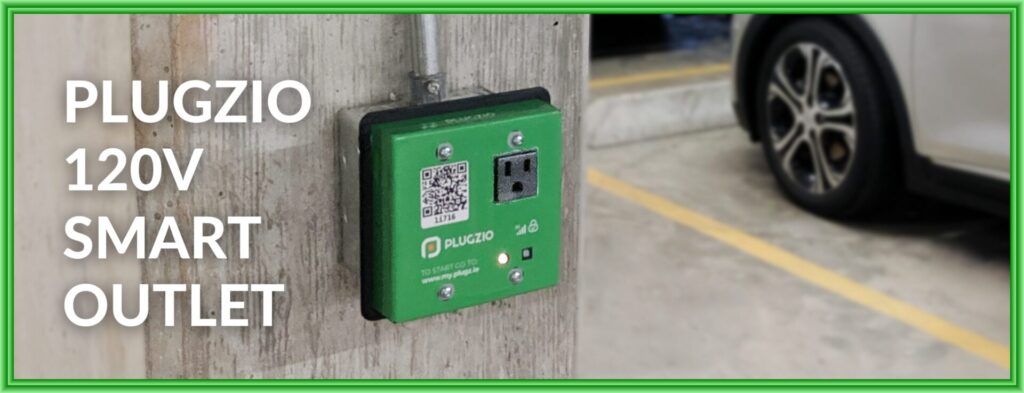
Plugzio Low-Power Level 2 Smart Receptacle
EV Ready Parking Spaces with EV Chargers.
Multifamily parking facilities with unassigned or common use parking. In addition to the low power Level 2 EV charging receptacle requirements of Section 4.106.4.2.2 (1), twenty-five (25) percent of unassigned or common use parking spaces not already provided with low power Level 2 EV charging receptacles, pursuant to Section 4.106.4.2.2 (1), shall be equipped with Level 2 EV chargers and shall be made available for use by all residents or guests.
EV charger connectors. EV chargers shall be equipped with J1772 or J3400 connectors.
An Automatic Load Management System (ALMS) may be used to reduce the maximum required electrical capacity to each space served by the ALMS. The electrical system and any on-site distribution transformers shall have sufficient capacity to deliver at least 3.3 kW simultaneously to each EV charging station (EVCS) served by the ALMS. The branch circuit shall have a minimum capacity of 40 amperes, and installed EV chargers shall have a capacity of not less than 30 amperes.
4.106.4.3 Electric Vehicle Charging for Additions and Alterations of Parking Facilities Serving Existing Multifamily Buildings
When existing parking facilities are altered or new parking spaces are added to existing parking facilities, and the work requires a building permit, each parking space added or altered shall have access to either a low power Level 2 EV charging receptacle or Level 2 EV charger, unless determined as infeasible by the project builder or designer and subject to concurrence of the local enforcing agency.
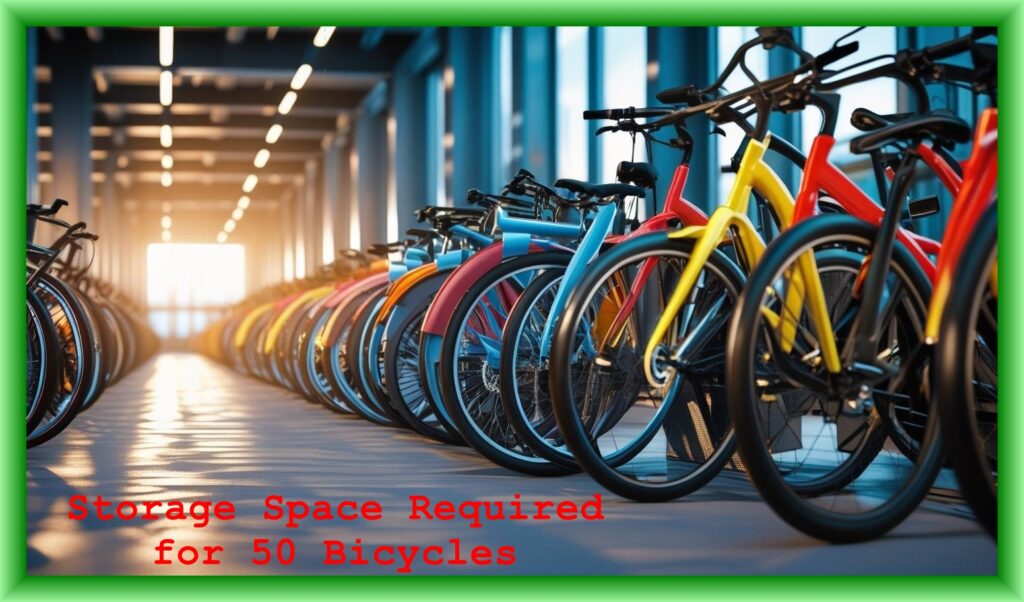
4.106.4.4. Bicycle Parking
Short-term Bicycle Parking for Multifamily Buildings, Hotels and Motels.
Provide on-site bicycle parking at a ratio of one parking space for every 10,000 square feet, but not less than two spaces. Short-term bicycle parking shall be located within 200 feet of building entrances, and readily visible to passers-by. Acceptable parking facilities shall be conveniently accessed from the street and may include, but not be limited to:
1. Permanently anchored bicycle parking devices, racks, or lockers in an unsheltered, open area.
2. Covered or uncovered enclosures with permanently anchored bicycle parking devices or racks.
Long-term Bicycle Parking for Multifamily Buildings.
Provide on-site bicycle parking at a ratio of one parking space for every two dwelling units. Acceptable parking facilities shall be conveniently accessed from the street and may include, but not be limited to:
1. Covered, lockable enclosures with permanently anchored bicycle parking devices or racks.
2. Lockable bicycle storage rooms with permanently anchored bicycle parking devices or racks.
3. Lockable, weatherproof, permanently anchored bicycle lockers.
If you have a 100-unit condo or apartment building, you are now required to provide covered parking spaces for 50 bicycles. When you consider access and covered construction, significant costs and complexity are added.
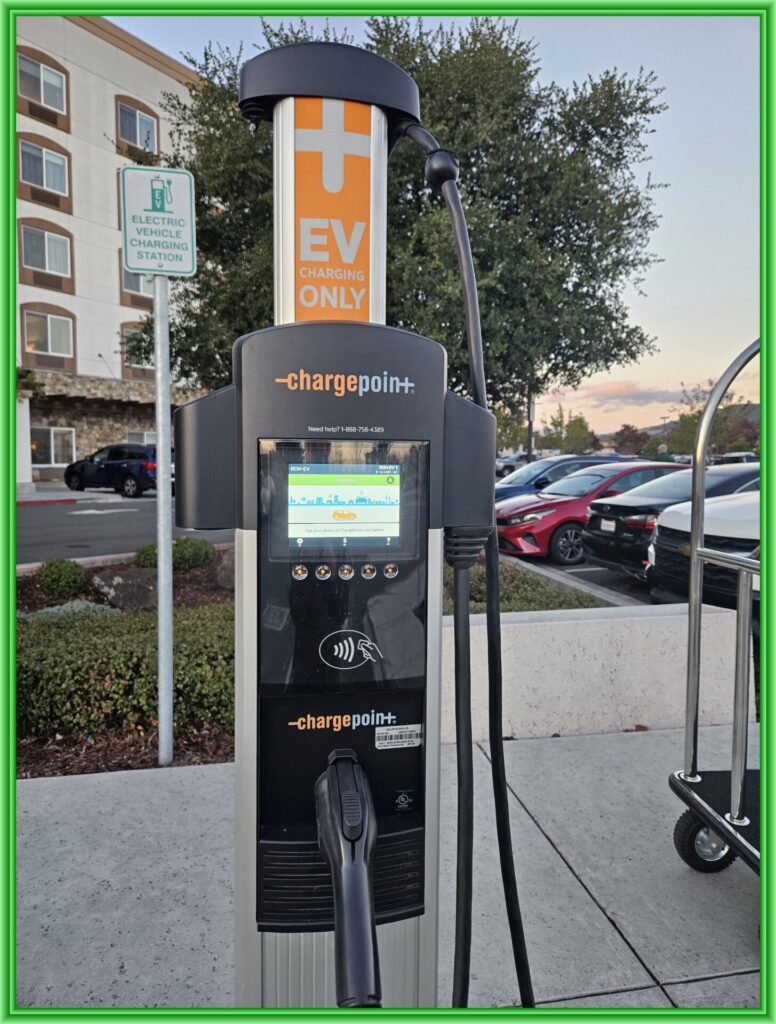
The Challenges with Large-Scale EV Charger Systems
Location
It is not just the construction cost of EV receptacles and charges that will affect affordable housing. Installation challenges include requiring a significant amount of space on the site for charger installation and access.
The EV receptacle or EVSE monument locations in a multifamily parking lot take up space. Since the new code requires one at every parking space, the site plan will need to be adjusted to accommodate these devices.
The first challenge is, where do the devices go? While low-power Level 2 charging receptacles are physically small, they present a significant problem in an open parking lot.
You cannot put a 12” high support and install the receptacle on it. This presents a tripping hazard. So, a taller monument must be constructed to mount the receptacle on.
Locating the receptacle monument presents further issues.
You can’t locate the receptacle in the paved area of the parking space, for obvious reasons. That leaves the space in front of the parking space, which is usually the sidewalk. However, sidewalks have code-defined minimum clearances. In California, minimum ADA accessible clearance is 36” for multifamily projects. You cannot put the receptacle on the sidewalk without impacting the ADA clearance.
This leaves one choice. Creating a dedicated EV receptacle or charger strip between the parking space and the sidewalk. While this sounds like a simple solution, this dedicated strip takes up valuable real estate that can affect the footprint available for the dwelling units.
If some of the parking spaces are in the middle of the parking lot, then a dedicated space will need to be provided in between the rows of parking spaces. They will also need some form of protection against vehicle impacts. The combined effects of the strip along the sidewalk and the strip between parking rows have now reduced the buildable area on the site by two or three feet or more.
Architects understand every square foot on a site plan is critical. Reducing the available site area by hundreds of square feet for EV chargers minimizes the space available for fire department access, parking spaces, other site requirements, and the available footprint for dwelling units.
The new code requirements result in a net loss of leasable, or usable, space on the site. This further reduces the return on investment for potential funding sources.
Design and Permitting
The infrastructure design for the EV charger system will be extensive. The added electrical loads to the site will increase the utility service size, increase feeder sizes, increase transformer sizes, and increase the power service size to every dwelling unit.
As part of the design process, electrical engineers must wait for the utility company’s analysis to verify that adequate power is available at the project’s location.
The infrastructure design for the EV charger system will certainly raise permit approval issues and cause delays. For many jurisdictions, this will be the first time they are dealing with such extensive EV charger system permit.
Since permit fees are based on the cost of construction, the additional cost of the EV charger system will result in increased permit fees.
Maintenance
The headaches of maintaining even a few electric vehicle chargers are well known throughout the industry. Equipment failures are so common that at any one time, up to thirty percent of EV charge stations are expected to be inoperative. Failures of electrical components are common. In a multifamily affordable housing project, the ongoing cost of managing and repairing chargers will be significant.
Vandalism
EV chargers seem to be a magnet for vandals. Whether politically or otherwise motivated, certain people seem to enjoy destroying them in unique and creative ways. While low-power level 2 receptacles may not entice copper wire thieves due to the small wire involved, this will not stop destructive vandalism. Damaged receptacles pose a serious safety hazard, and repairing them cannot be deferred.
Access Security
Since the charger receptacles are directly wired to individual dwelling units, access security is required. Failure to do so can result in a tenant paying for someone else to charge their vehicle. Providing keys for access locks on charging receptacles presents a key management issue for the owner, along with its associated costs. Using digital security access presents similar problems.
Metering
The design team and owner will need to decide whether metering of the receptacles is essential to the project and user needs. Most EV car owners expect to be able to monitor their charging costs. This function is typically done at the charger. While smart level 2 receptacles are available, they require an internet connection. Providing and maintaining this service on-site will become an operational issue. Smart receptacles, such as the Plugzio Smart Outlet, can provide remote receptacle on/off control in a secure and weatherproof enclosure. However, these devices come with added cost.
A Lifetime Commitment
EV chargers create a lifetime commitment of operational demands and ongoing maintenance. The full lifecycle costs of the systems must be considered. There is little doubt that the EV charger system will be a significant ongoing operational cost for every affordable housing project.
The Impact on Affordable Housing Construction
There can be no doubt that the changes created by the California Energy Commission to the 2025 CalGreen Code are the costliest of all the 2025 California building code changes.
At a time when California is experiencing severe housing shortages, it seems counterintuitive to specifically target affordable housing developments with these substantial cost increases.
While there is a need to move the state towards electric vehicles, this decision at this time seems out of touch with the more pressing need for affordable housing.
Where is the over-arching priority decision-making at the state level? There is none. The California Energy Commission enacts changes without oversight from the legislature or any elected officials.
Some may assume the Building Standards Commission takes on the oversight role. That is not the case. At last count, the BSC had a total of fourteen employees. They have no resources to review, let alone challenge, the decisions made by the California Energy Commission.
There can be no doubt that the 2025 California Green Building Standards Code will result in millions of dollars in additional construction and long-term operational costs for affordable housing projects. Further, these millions of dollars in costs will need to be passed through to the renters or purchasers of “affordable” housing.
The 2025 CalGreen Code changes will repress new construction of affordable housing projects in the state and discourage potential investors.
This is especially true when you consider all the additional costs associated with the 2025 California Energy Code updates.

The vast disconnect between the California legislature and the California Energy Commission occurred on June 30, 2025.
It was on this date that Governor Newsome signed into law the “groundbreaking reforms” to the Housing Accountability Act and the Housing Crisis Act. These were intended to “build more housing and boost affordability”.
It’s unclear whether the Governor was aware that while he was passing a bill to accelerate affordable housing in the state, the California Energy Commission was pulling the rug out from under him with the massive cost increases to affordable housing construction.
Investors who welcomed the relief from environmental impact reports will take their money elsewhere when they understand the cost of the infrastructure for EV charging stations for every dwelling unit.
Since low-income tenants can’t afford expensive electric vehicles, there will be no way to recoup any part of the EV charger investment. Furthermore, these investors are well aware of the never-ending problems associated with maintaining EV chargers.
I’m sorry Guv, but the California Energy Commission has already undone your big win.
Perhaps you two should talk sometime?
It would almost be funny if it weren’t so sad.
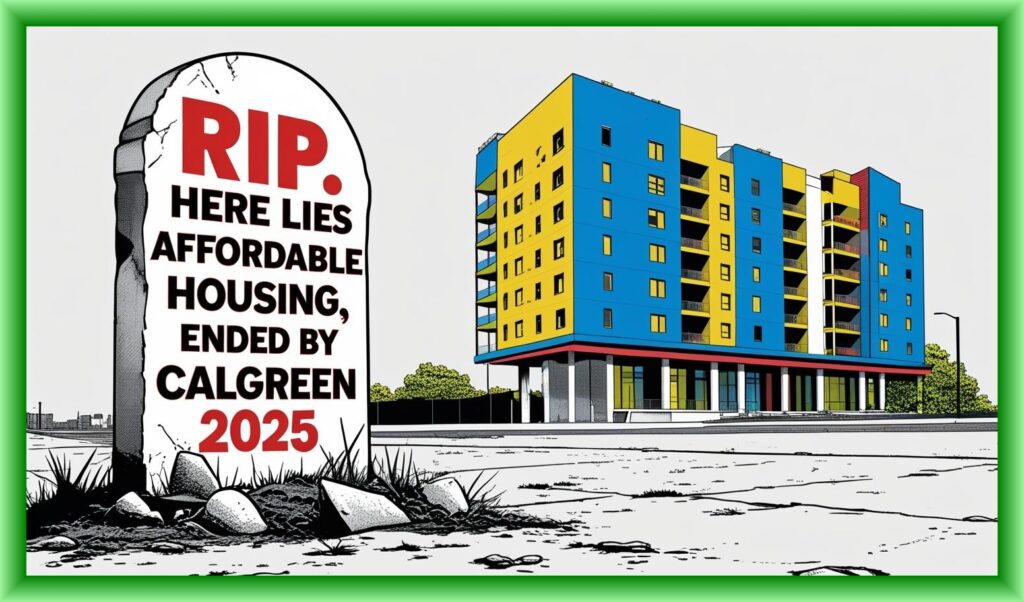
We’re CalGreen Energy Services, and we approve this message….


Gary Welch has over 35 years experience in the field of sustainable building design. He is the CEO of CalGreen Energy Services. Gary is an ICC Certified CalGreen Special Inspector and Plans Examiner.

